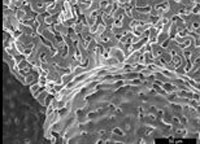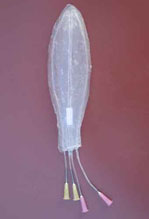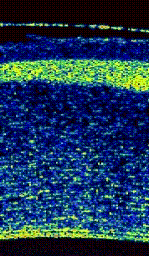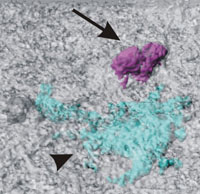
Preclinical evaluation of potential drug candidates for human inflammatory bowel disease is performed in murine models of colitis. The most widely used model is dextran-sodium sulfate(DSS)-induced colitis. Non-invasive imaging of murine experimental colitis by Positron emission tomography (PET) combined with radiotracers is feasible and offers the opportunity of serial follow-up investigations. This technique significantly reduces the number of test animals. More...

This in-vitro approach allows the quantification of biofilm formation on implants, human bone grafts and bone-graft substitutes by means of microcalorimetry. The method has the advantage of allowing the detection of bacterial biomass without removing the biofilm from the surface of the specimen. More...

The rabbit silicone ear is a new patented training device for practising taking blood and carrying out intravenous injections in rabbit ear veins and arteries. It replaces the need for using live animals in the initial basic exercises required for trainees in animal experimental techniques. More...

Interaction of chemicals and pharmaceuticals with the eye can be investigated using an organ culture in vitro assay based on rabbit corneas obtained from abattoir waste. Full metabolic function is maintained over a culturing period of up to 21 day enabling observation of recovery after chemical or mechanical trauma and undesired side effects during pharmaceutical treatment without the need for animal experiments. More...

The use of a new human cell lysate kit for protein translation will replace the rabbit reticolcyte lysate and the use of rabbits for its production. More...

Particle-lung cell interactions can be investigated in a triple cell culture in vitro model of the human airway wall. It is possible to analyze the cellular interplay and response of epithelial cells, human blood monocyte derived macrophages and dendritic cells after exposure to particles. More...
